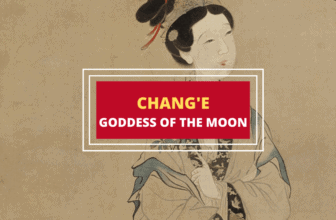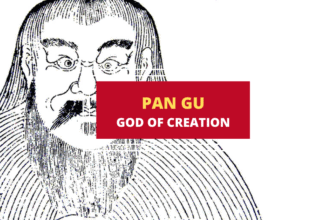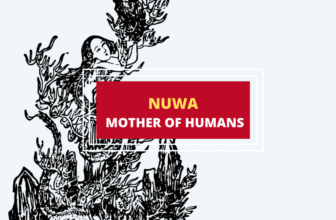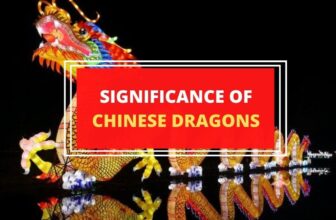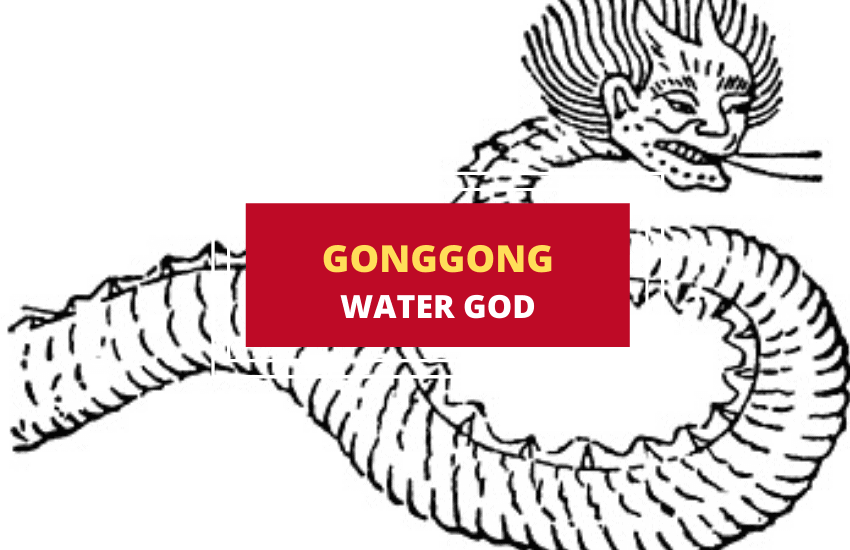
Table of Contents
Floods and deluges are concepts found in almost every mythology, from ancient Greek mythology to the biblical account of the Deluge. There are several flood stories in Chinese mythology as well. In these stories, Gonggong is the god that plays a chief role in the disaster. Here’s a look at the water god and his significance in Chinese culture and history.
Who Is Gonggong?
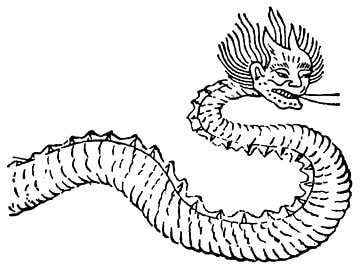
In Chinese mythology, Gonggong is a water god who brought a disastrous flood to ruin the Earth and cause cosmic disorder. In ancient texts, he’s sometimes referred to as Kanghui. He’s commonly depicted as a huge, black dragon with a human face and a horn on his head. Some descriptions say that he has a body of a serpent, a man’s face, and red hair.
Some stories depict Gonggong as a demon deity with a great strength, who battled with other gods to take over the world. He is notorious for the battle he created that broke one of the pillars that supported the heavens. There are different versions of the tale, but in most cases, the water god’s anger and vanity caused the chaos.
Myths about Gonggong
In all accounts, Gonggong ends up being sent into exile or is killed, usually after losing in an epic battle with another god or ruler.
The Battle of Gonggong and Fire God Zhurong
In ancient China, Zhurong was the god of fire, the Brilliant One of the Forge. Competing with Zhurong for power, Gonggong knocked his head against the Mount Buzhou, one of the eight pillars that hold up the sky. The mountain fell and caused a tear in the sky, which created storm of flames and floods.
Fortunately, the goddess Nuwa mended this break by melting rocks of five different colors, restoring it to good shape. In some versions, she even cut the legs off a huge tortoise and used them to support the four corners of the sky. She collected ashes of reeds to stop the food and chaos.
In the texts from Liezi and Bowuzhi, written during the Jin dynasty, the chronological order of the myth is reversed. Goddess Nuwa first mended a break in the cosmos, and later Gonggong fought with the fire god and caused cosmic disorder.
Gonggong Banished by Yu
In the book Huainanzi, Gonggong is linked with the mythical emperors of ancient China, such as Shun and Yu the Great. The water god created a disastrous flood that swept near the place of Kongsang, which made people flee to the mountains just to survive. Emperor Shun ordered Yu to come up with a solution, and Yu made canals to drain the floodwaters to the sea.
A popular story says that Gonggong was banished by Yu by simply ending the flooding to the land. In some versions, Gonggong is depicted as a foolish minister or a rebellious nobleman who did the damage to the pillar with his irrigation works, damming the rivers and blocking up the lowlands. After Yu managed to stop the flooding, Gonggong was sent into exile.
Symbolism and Symbols of Gonggong
In different versions of the myth, Gonggong is the personification of chaos, destruction and catastrophes. He’s commonly depicted as evil, one who challenges another god or ruler for power, causing a disruption in the cosmic order.
The most popular myth about him is his battle with the fire god Zhurong, where he collided with the mountain and caused it to break, bringing disaster to humanity.
Gonggong in Chinese History and Literature
Mythology about Gonggong appears in the writings of the Warring States period in ancient China, around 475 to 221 BCE. A collection of poems known as Tianwen or Questions of Heaven by Qu Yuan features the water god destroying the mountain which supported heaven, along with other legends, myths, and pieces of history. It’s said that the poet wrote them after he was unjustly exiled from the capital of Chu, and his compositions were meant to express his resentment about the reality and the universe.
By the time of the Han period, the Gonggong myth contained much more detail. The book Huainanzi, written in the beginning of the dynasty around 139 BCE, featured Gong Gong butting into Mount Buzhou and goddess Nuwa mending the broken sky. Compared to the myths fragmentally recorded in Tianwen, the myths in Huainanizi are written in a more complete form, including story plots and details. It’s often cited in studies of Chinese myths, as it gives important contrasts to other ancient writings.
In some versions of the myth in the 20th century, the damage caused by Gonggong also serves as an etiological myth of Chinese topography. Most stories say that it caused the heavens to tilt toward the northwest, and the sun, moon and stars move in that direction. Also, it’s believed to be the explanation why the rivers of China flow toward the ocean in the east.
Importance of Gonggong in Modern Culture
In modern times, Gonggong serves as a character inspiration for several works of fiction. In the animated cartoon The Legend of Nezha, the water god is featured, along with other Chinese gods and goddesses. The Chinese musical Kunlun Myth is a whimsical love story that also includes Gonggong in the plot.
In astronomy, the dwarf planet 225088 was named after Gonggong by the International Astronomical Union (IAU). It’s said to have large amounts of water ice and methane on its surface, which makes Gonggong a fitting name.
The dwarf planet was discovered in 2007 in the Kuiper belt, a donut-shaped region of icy objects outside Neptune’s orbit. It’s the first and only dwarf planet in the solar system that has a Chinese name, which could also stir interest and understanding of Chinese culture, including ancient mythologies.
In Brief
In Chinese mythology, Gonggong is the water god who destroyed the sky pillar and brought floods to Earth. He’s known for creating chaos, destruction, and catastrophes. Often described as a black dragon with a human face, or a demon deity with a serpent-like tail, Gonggong serves as a character inspiration in several works of modern fiction.




